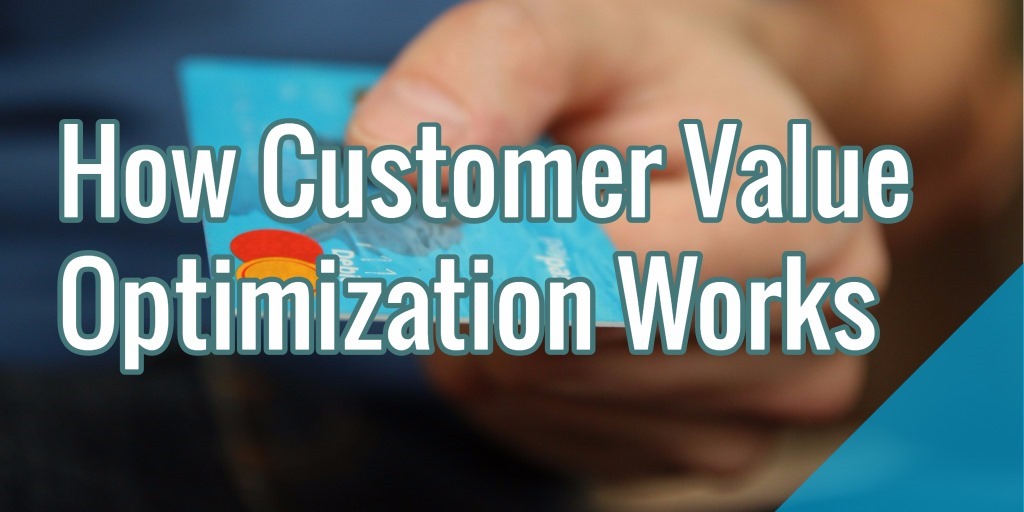In business, we love efficiency. We love to squeeze that extra 20% out of a process. Just like Einstein, we’d skip the socks to get a few more hours out of life, if only we could get important clients and investors to understand that a lack of socks does not mean a lack of professionalism.
Since not wearing socks is off the table, we need to turn our scrutinizing gaze to other things. In this article, we’re going to talk about optimizing one of the most important metric to a business: customer value.

“We’re sorry Mr. Einstein, we’ve decided to go with your competitor.
He says that E does not equal mc2.”
What Is Customer Value Optimization?
Customer value optimization, or CVO, is a tried and tested strategy to get the most value out of your customers. The process is fairly elegant and is comprised of two simple steps:
- Identify your best customers
- Magnify their value
CVO is closely linked to another metric: customer lifetime value, or CLV. Increasing CLV can offer some of the best ROI in business, ensuring both company growth and long-term profits.
CVO can also go by several other names, many of which are only partial synonyms. You have LTV or RFM in the catalog industry; cohort analysis for the web analysts, segmentation and targeting for marketers, and the good old CRM.
However, it’s important to understand that CVO is a specific strategy that uses highly targeted tactics to bring out the best out of your customer base.
How To Use CVO To Drive Profit
Implementing CVO starts with an understanding of the type of customers that engage with your business:
- The majority of your customers are middle of the road, medium value buyers, that do not offer a great profit margin individually, but there’re plenty of them to go around.
- You then have 20% of your customers who are, to put it bluntly, ripping you off. These customers like samples, they like returns, they like discounts, they like talking to customer support a lot, and they bring in very little to no money into your company.
- Thankfully, you also have another 20% of your customers who are simply great. These are the customers that buy high value items at a high volume. They do not need to be sold extensively on an item, they do not ask for their money back, and they always come back for more. These customers are the main focus of CVO.
Identify Your Best Customers
Remember the first step of the CVO strategy? You want to identify your best customers.
The great thing about these customers is that they were great before they met you. Many in the CVO world believe that you cannot actually make great customers. This means that a big chunk of questioning, probing and headaches are removed when you engage in CVO.
But what does this mean for your overall strategy?
It means that your CVO strategy does not revolve around alchemical practices, where you turn dirt into gold. It means that you simply find a way to mine more gold, refine your gold better… and ok, maybe a little alchemy.

Don’t be discouraged Rex, identifying your
best customers is not that hard.
Magnify Your Customers’ Value
We’re now talking about the second step: magnifying the value of your best customers. There are three ways to do this:
- Bring in more great customers
- Turn poor and mediocre customers into great customers
- Get more value out of your existing great customers
Let’s take a look at each of them.
Bring-in More Great Customers
As addicts like to say – “If one’s good, fifty’s better!”
This first tactic revolves around reviewing your customer intake channels and finding out where most of your high quality customers come from.
For example, you might find that you get most of your great customers by advertising on social media and through content marketing, while your AdWords campaign and certain landing pages do not bring in as many high quality customers.
The first optimization here is the most obvious one: switch more of your marketing budget to the channels which provide the highest quality clients. Often times, you will find that a channel brings in users that have a high conversion rate, but who buy low-margin products. Not so good.
You then want to find commonalities between your best channels, and try to implement them as a standard procedure in your current and future marketing campaigns.
Turn Poor And Mediocre Customers Into Great Customers
As mentioned above, it’s hard to “make” a great customer. You either have them, or you don’t. However, if we keep in mind that a great customer is a combination of several factors, we can look at our poor and mediocre customers, and create a strategy to get more value out of them.
This is done through the use of triggers. I’m sure you are aware of loss leader products. The same concept applies here. You can look at your poor and mediocre customers as if they are taking advantage of a loss leader.
By the way, in case you don’t know, a loss leader is a pricing strategy where a product is sold at a loss in order to attract customers, which can then be sold on more profitable items. So without knowing, you might’ve been engaging in this strategy, but implementing only half of it.
All you have to do now is upsell the customers who’ve been attracted by your loss leader.
Find out which products go hand in hand with your loss leader. These are your triggers. You then want to focus your marketing efforts on promoting these products to your less valuable customers.
But remember, this tactic is best used within marketing channels that already exist. You do not want to focus your efforts on turning lower quality customers into great customers. For example, if you are already blasting out emails to your customers, tailor specific emails which contain trigger products for your lower-margin clients.

Source: shopify.com
Get More Value Out Of Your Existing Great Customers
Improving your bottom line is best done through your clientele. You can either get more customers, get them to spend more, or get them to spend more frequently. In CVO, everything revolves around your best customers, so when we’re talking about the latter two tactics, we’re applying them to the top 20% of your customers.
So, how do you get your best customers to spend more? It’s simple – you can upsell them, offer premium services or sell on volume with a discount. When engaging in this tactic, it’s best to observe your best customers’ purchasing behavior, maybe launch a survey, and then tailor a strategy around the information that you gather.
When it comes to increasing the frequency of purchases, the strategy is a bit more complicated, because you’re not actually looking to get existing customers to buy more often. The strategy here revolves around bringing great customers who’ve “defected” back into the fold.
By observing customer behavior, you can identify the bottlenecks and breaking points, where purchases from great customers start to taper off. This is where you want to counteract with reengagement campaigns – something along the lines of an email campaign that notifies users of abandoned carts.
This tactic of increasing frequency also encompasses any effort meant to prolong the amount of time a user stays subscribed to a monthly or yearly service.
Conclusion – Working Within The CVO Frame Of Mind
CVO is an elegant strategy and a frame of mind which puts all marketing efforts into the context of servicing your best customers. Without an emphasis on the best customer, a company can waste a considerable budget trying to please everybody. Remember, the best way to achieve ROI through CVO is by creating strategies that attract and engage customers with the most profitable behavior.
How Customer Value Optimization Works
The post How Customer Value Optimization Works appeared first on Search Engine People Blog.
Search Engine People Blog(106)







